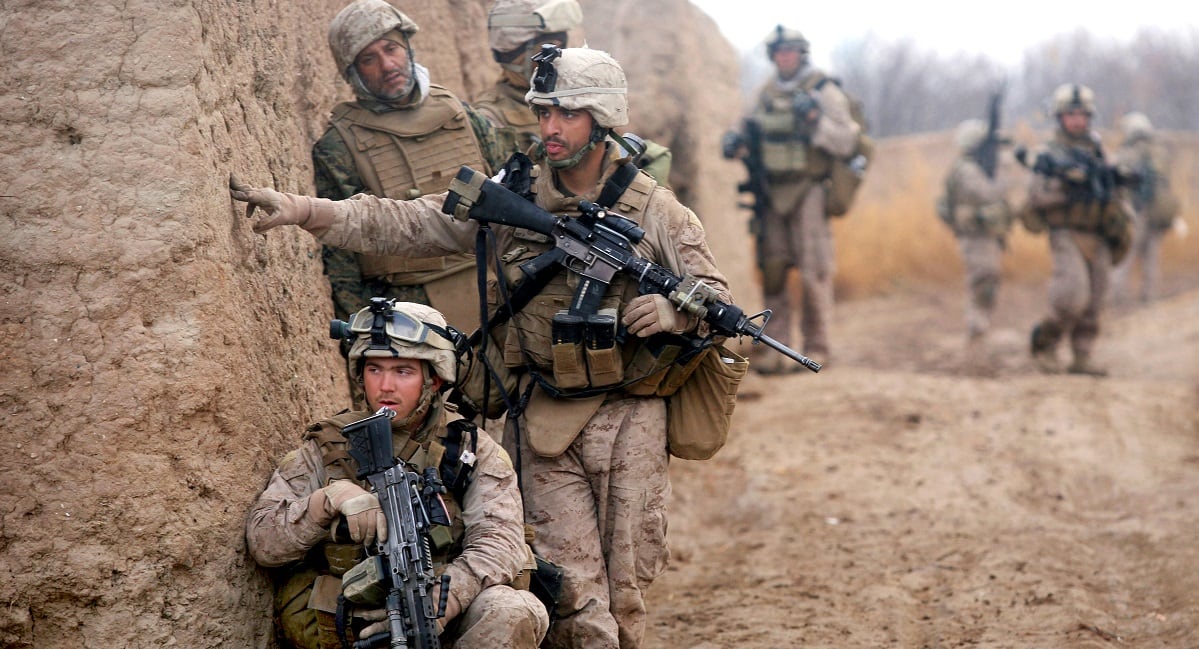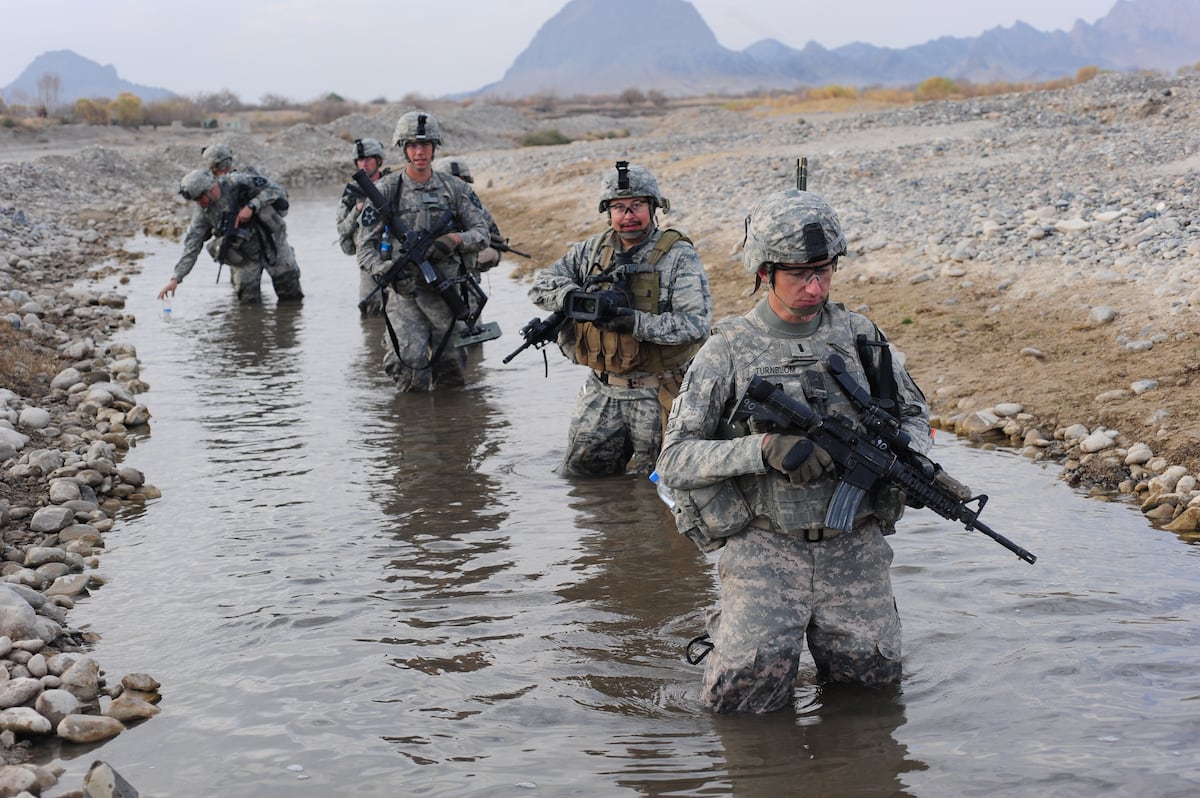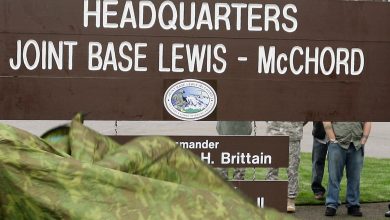At the peak of the war in Afghanistan, following President Barack Obama’s troop surge in late 2009, about 110,000 service members were deployed to the country at a given time. At least some of those troops were gleaning insights from their vantage point on the ground that would take senior leaders back stateside years more to uncover.
That’s a core contention of the Afghanistan War Commission, a congressionally created bipartisan entity tasked with making a useful accounting of America’s sprawling “Forever War.” The commission is now about halfway through its two-year mandate and expects to publish an interim report at its official midpoint in August.
On Monday the commission will hold a multipanel hearing on what for many is a defining point of the war: the surge in which the U.S. aggressively recommitted to the faltering conflict and began to implement the counterinsurgency efforts that would stagger on for more than a decade. Ahead of that hearing, on Friday, the two co-chairs of the commission, Shamila Chaudhary and Colin Jackson, sat down with military veterans who’d served in the surge period to understand the period from their perspective.
RELATED
Chaudhary, who worked at the U.S. State Department and the National Security Council and focused on Pakistan and Afghanistan during the surge period, said talking with these veterans showed “just where strategy and policy met reality.”
She cited, in particular, an exchange with a veteran who’d been tasked with driving trucks over the Pakistan border into Afghanistan to deliver materiel and supplies to troops.
“I told him, ‘I have thought about someone like you this whole time,’ because the policy discussions we had in Washington were all about, when the routes closed, what happens to our folks in the field,” Chaudhary said in an interview with Military Times. “And here was this person who was experiencing it for many months at a time, and so it brought forth this reality that I think needs to be reflected in the report. And having these sessions with them really allows us to get that ground truth.”
The commission has involved veterans from the start, launching a portal where vets could share their stories and questions they wanted answered. (It has since moved to a new web page.)
Some of the commission’s findings, from veterans and experts, align with conclusions previously drawn: in particular, that the length and frequency of deployments to Afghanistan were detrimental to troop morale and stability as well as the continuity of the war itself.
“We talked to a three-star general in one meeting who said, ‘All my father wants to know is why I had to go there nine times,” Jackson, an Afghanistan veteran himself and former deputy assistant secretary of defense for Afghanistan, Pakistan and Central Asia, said.
Other findings, the commission chairs said, have concerned security force assistance and how the U.S. went about it, how successful the Pentagon’s model of working with Afghan troops was, whether serious security force assistance efforts were begun early enough and whether another framework would have produced better results.

Amid reflections on the pressure from Washington to turn a meaningful corner of the war, and the efforts of troops and commanders on the ground confronting the operational realities and sometimes absurdities of trying to establish elements of Western-style democracy in Afghanistan, one common refrain emerges: “We were just trying to do the best we could,” Chaudhary said.
“So that is a real kind of unifying theme, I would argue, because it actually is very different than the infighting that we saw during the course of the war, where you saw a lot of blame going to one part of the U.S. government versus others. Now it’s becoming much more of a shared kind of experience, of, we were all trying to figure it out,” she said. “We haven’t reached a verdict yet on that, but we are seeing that there’s a lot of overlap in the thinking of all the different government entities out there. Like, being far too ambitious in a place that required less.”
To date, the commission has conducted 114 interviews and held multiple public hearings and private sessions. The length of the final report, due in August 2026, will be similar to the 9/11 Commission report, which was nearly 600 pages, Chaudhary said.
The most significant obstacle to the project remains its scope. Unlike the recently announced Defense Department review of Afghanistan and the previous House Foreign Affairs Committee investigation — both intended to focus narrowly on assigning blame for the disastrous and costly pullout in 2021 — the Afghanistan War Commission’s investigation seeks to take in Afghanistan from all sides, engaging agencies across government and international partners and highlighting positive learning and successes as well as failures. To help organize the project, the chairs said, they’re dividing the war into about eight significant eras, including, for example, the initial invasion and the surge.
The commission, Jackson said, remains committed to producing a report that will be accessible not only to planners and strategists in Washington but also to the veterans who served in Afghanistan over the decades. How they’ll do that is still a work in progress.
“We’ve got a balancing act here. It can’t be 100% a Bob Woodward — Obama’s Wars — level of analysis, Washington on Washington, but it also can’t be 100% Restrepo,” Jackson said, referencing a gritty 2010 war documentary. “And so the question is, what’s the right balance to convey an understanding of decisions, their impact and their shortcomings? And that’s, I think, among the more difficult challenges we face in producing a final report.”
Read the full article here





